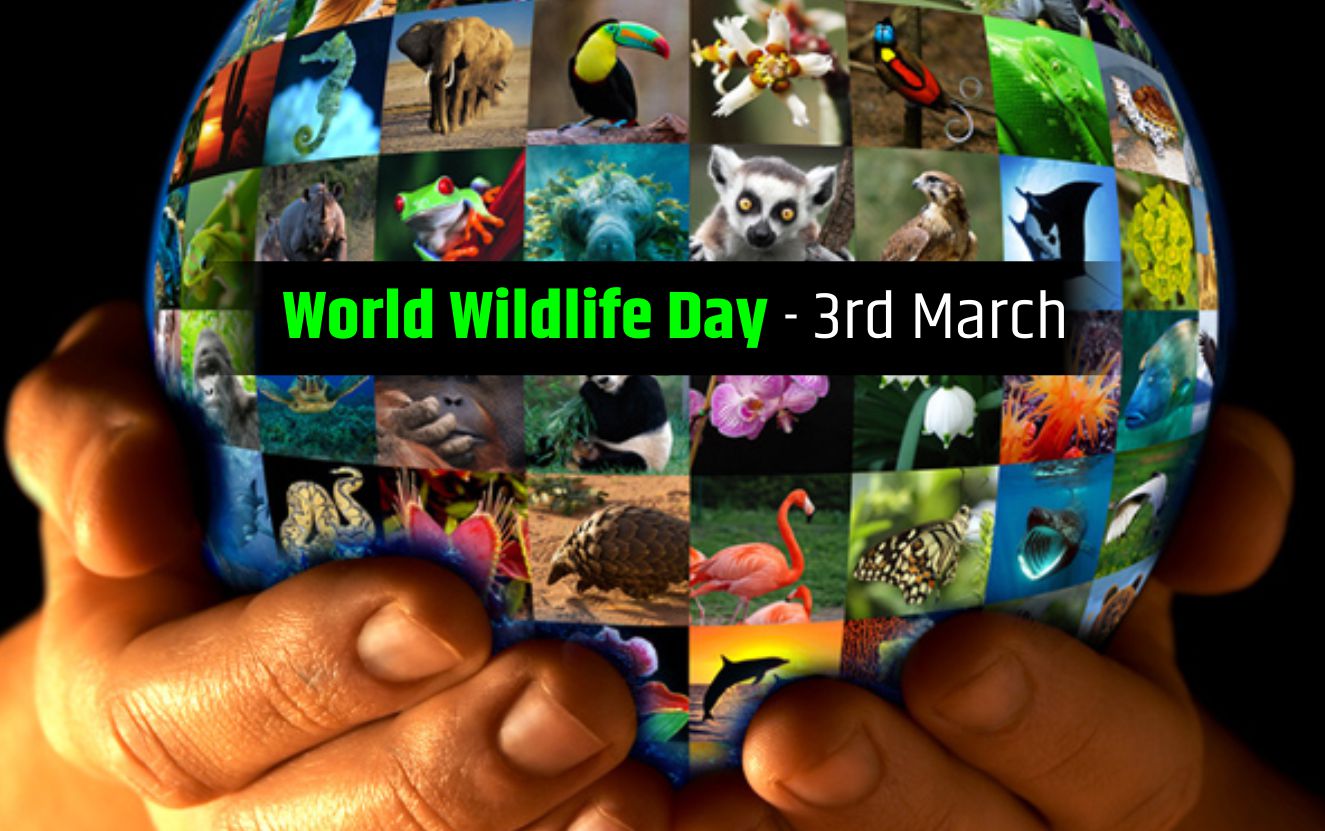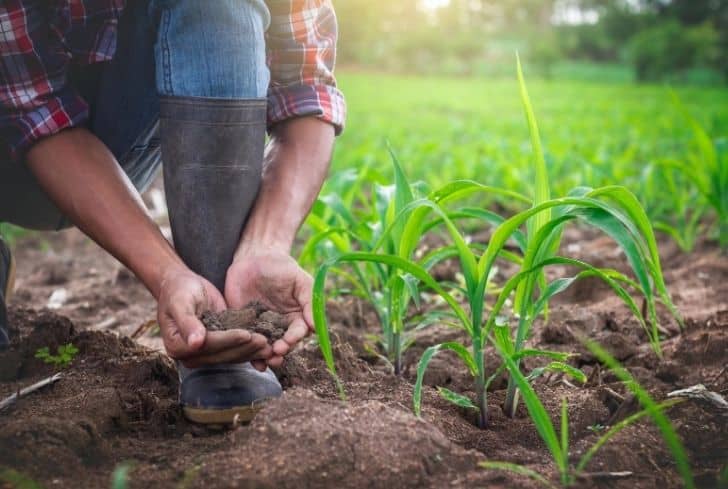A day is just not enough for something that sustains us throughout our lives. Yet a dedicated day is required to question, introspect and revamp our broken efforts.
It all began in 2013, at 68th session of the United Nations General Assembly (UNGA) in its resolution UN 68/205.
Every upcoming 3 March was proclaimed as “World Wildlife Day“, the international day of the adoption of the Convention on International Trade in Endangered Species of Wild Fauna and Flora (CITES) on planet Earth.
It aimed to raise awareness, celebrate and ultimately benefit the fauna and flora in upon the proposal by Thailand in 1973.
Just after few notable conventions undertaking the responsibility of protecting environment, not too late the cognisance and later insistence upon being the saviour to wildlife was seen.
Wildlife seems to sprinkle its own set of benefits as it helps in maintaining the balance of nature.
One specie checks the balance on the other. Interfering to decrease or limit one specie can lead to increase or expansion of the other.
Last year has shown us how such an intricate balance is essential to be maintained and how severely it impacts us.
2020 gave us deep lessons about our sustenance vis-a-vis the wildlife that is constantly disturbed and is often made to wander and search for new hosts. It’s important for us to retain those lessons within.
Today is World Wildlife Day with a meaningful theme for 2021: “Forests and Livelihoods: Sustaining People and Planet”
What does it reflect?
It envisages to highlight the central role of forests, forest species and ecosystems services in sustaining the livelihoods of hundreds of millions of people globally, and particularly of Indigenous and local communities with associations to forest and forest-adjacent areas.
This theme so complements with United Nations Sustainable Development Goals 1, 12, 13 and 15 and it has great implications on their wide-ranging commitments on alleviating poverty, ensuring sustainable use of resources, and on conserving life on land.
Few facts connected to our wild heritage and the theme this year:
World Heritage forest sites globally cover a total surface area of more than 75 million hectares.
This represent over 13 per cent of all IUCN category I-IV protected forests worldwide.
Wildlife has been under constant threat as the population sizes dropped by 68% between 1970 and 2018.
Species are getting extinct a 1,000 times more frequently today than during the 60 million years before the arrival of humans, according to a 2014 study by Brown University in the US, especially the freshwater species at the rate of staggering 84%.
According to IPBES, 100 million hectares of tropical forests are already diverted to Agriculture and ensure food security.
Even 40% of plant species are facing threats to survival due to invasive plant race and deforestation, by State of the World’s Plants and Fungi report.
200-350 million people live on the periphery of forested areas around the world are the most vulnerable and deprived sections in human society.
They completely rely on the various ecosystem services provided by forest and forest species for their livelihoods and to cover their most basic needs, including food, shelter, energy and medicines.
Roughly 28% of the world’s land surface is currently managed by indigenous peoples, including some of the most ecologically intact forests on the planet. These spaces are not only central to their economic and personal well-being, but also to their cultural identities.
A Netflix documentary A Life On Our Planet by Sir David Attenborough, a true naturalist is enough to shake our souls within.
It recounts the environmental changes he has experienced first-hand throughout his career, such as the devastation of the Borneo rainforest and its native orangutan population, as per data by World Economic Forum.
Since Forests, forests dwelling species and the livelihoods that depend on them constantly find themselves at the crossroads of multiple planetary crises we serve them on face, from climate change to deforestation, from global warming to biodiversity loss and the health, social and economic impacts of the COVID-19 pandemic. They are becoming more and more vulnerable.
How can we cope up and undo these losses, particularly in India?
One of the best ways to save the ailing planet is through transformation of the global food system, eating lesser meat or food stuffs those provide greater global warming.
Instead we have turned onto synthetic meat now or sustainable meat, the one that is made in labs from plant sources.
Diverting lesser forest areas for developmental purposes or balancing the needs.
Arrangement of more animal traffic corridors to ensure their safety in travelling from one National park to another like recent Nilgiri Elephant corridor famous for Supreme Courts stating that “the elephant is a gentleman and man should give way for the elephant”.
At times, good provision of prey and water sources in the actual habitat tends to reduce such ‘push‘ movements.
To limit agriculture that accounts for nearly 60% of global biodiversity loss and about a quarter of CO2 emissions worldwide, reducing water intensive crops and diversifying crop cultivation like giving more space to pulses and oilseeds esp, in dry areas of India.
“Sustainability is a seemingly laudable goal – it tells us we need to live within our means, whether economic, ecological, or political – but it’s insufficient for uncertain times.
How can we live within our means when those very means can change, swiftly and unexpectedly, beneath us?” Jamais Cascio
Imbibe and reverberate sustainable methods of farming:
We can undertake more inclusive agriculture methods like ZBNF(Zero Budget Natural Farming) involves use of the fermented microbial culture Jeevamrutha (a mixture of water, cow urine, cow dung, flour, soil, and brown sugar) on soil, Kuttanad Below Sea-level Farming(only system in India that practices rice cultivation below sea level), organic farming at large scales etc.

There are various methods of sustainable agri practices including crop rotation, biofarming or Bio intensive Integrated Pest Management, polyculture, permaculture etc.
For more methods in detail, click here
On this day 2021, through “Wildlife day” we celebrate forest-based livelihoods and dream to promote forest and forest wildlife management practices that accommodate both human well-being and conservation of forests in the long run.
It also hopes to inculcate the value of traditional practices those establish a more sustainable relationship with these crucial as well as critical natural systems.
It is to always remember that animals and plants living in the wild have an intrinsic value and contribute significantly to the ecological, genetic, social, economic, scientific, educational, cultural, recreational and aesthetic aspects of human well-being and to sustainable development.
“Let us remind ourselves of our duty to preserve and sustainably use the vast variety of life on the planet. Let us push for a more caring, thoughtful and sustainable relationship with nature.” By António Guterres
Wildlife reflects on our past and holds key to our future. It is to be preserved like culture because our surroundings depict whatever is inside us. It is to be kept untouched and serene like History.






